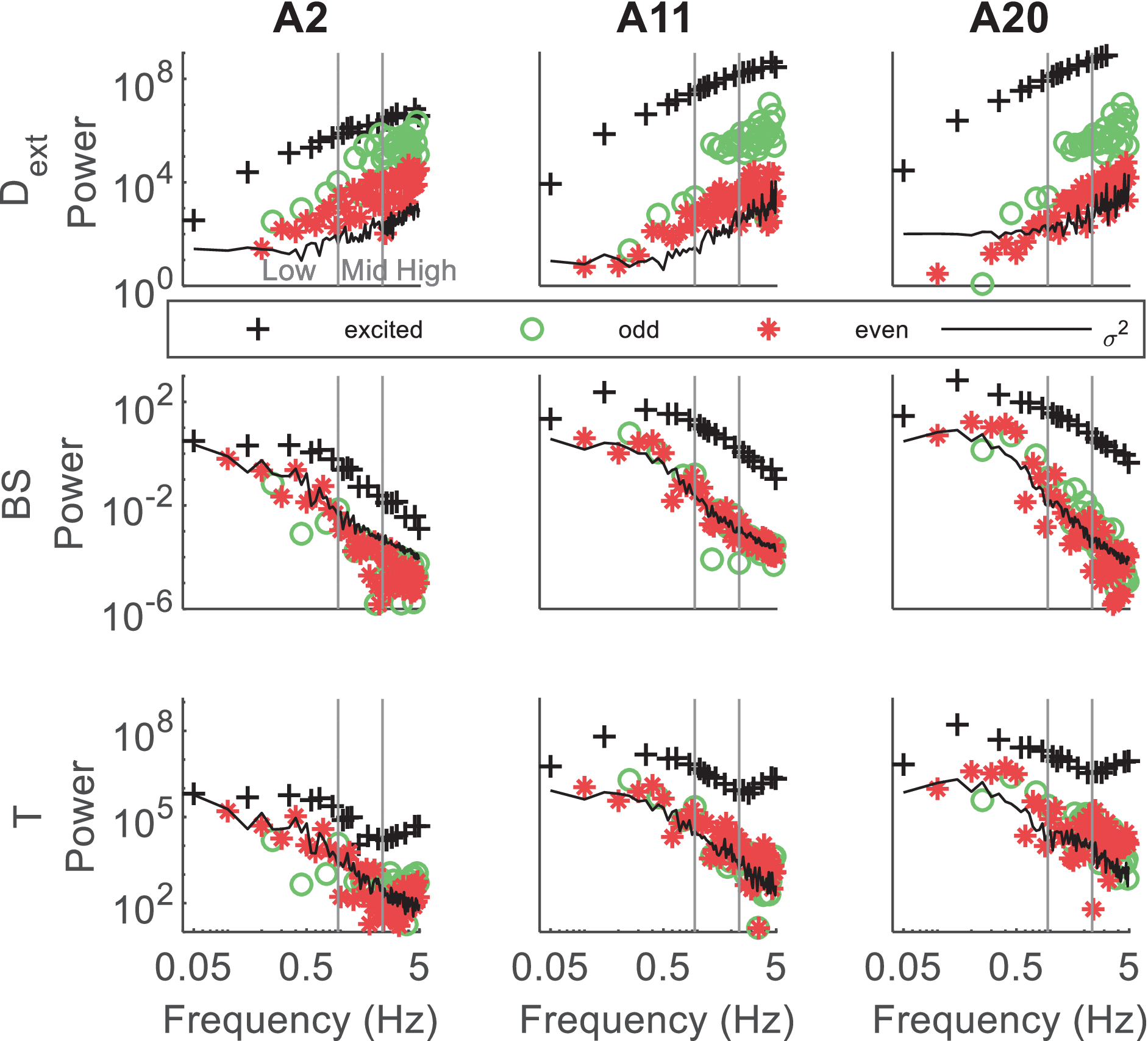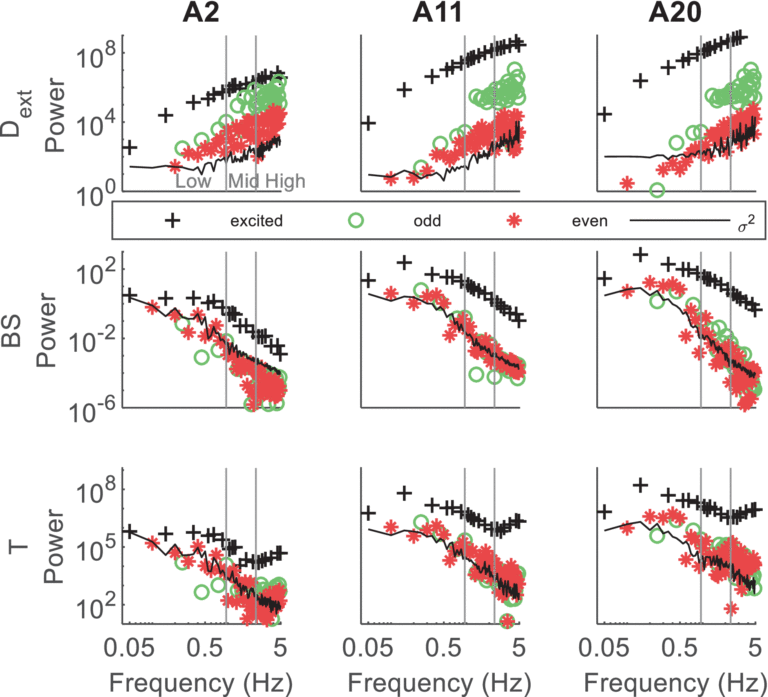
To unravel the underlying mechanisms of human balance control, system identification techniques are applied in combination with dedicated perturbations, like support surface translations. However, it remains unclear what the optimal amplitude and number of repetitions of the perturbation signal are. In this study we investigated the effect of the amplitude and number of repetitions on the identification of the neuromuscular controller (NMC). Healthy participants were asked to stand on a treadmill while small continuous support surface translations were applied in the form of a periodic multisine signal. The perturbation amplitude varied over seven conditions between 0.02 and 0.20 m peak-to-peak (ptp), where 6.5 repetitions of the multisine signal were applied for each amplitude, resulting in a trial length of 130 sec. For one of the conditions, 24 repetitions were recorded. The recorded external perturbation torque, body sway and ankle torque were used to calculate both the relative variability of the frequency response function (FRF) of the NMC, i.e., a measure for precision, depending on the noise-to-signal ratio (NSR) and the nonlinear distortions. Results showed that the perturbation amplitude should be minimally 0.05 m ptp, but higher perturbation amplitudes are preferred since they resulted in a higher precision, due to a lower noise-to-signal ratio (NSR). There is, however, no need to further increase the perturbation amplitude than 0.14 m ptp. Increasing the number of repetitions improves the precision, but the number of repetitions minimally required, depends on the perturbation amplitude and the preferred precision. Nonlinear contributions are low and, for the ankle torque, constant over perturbation amplitude.

